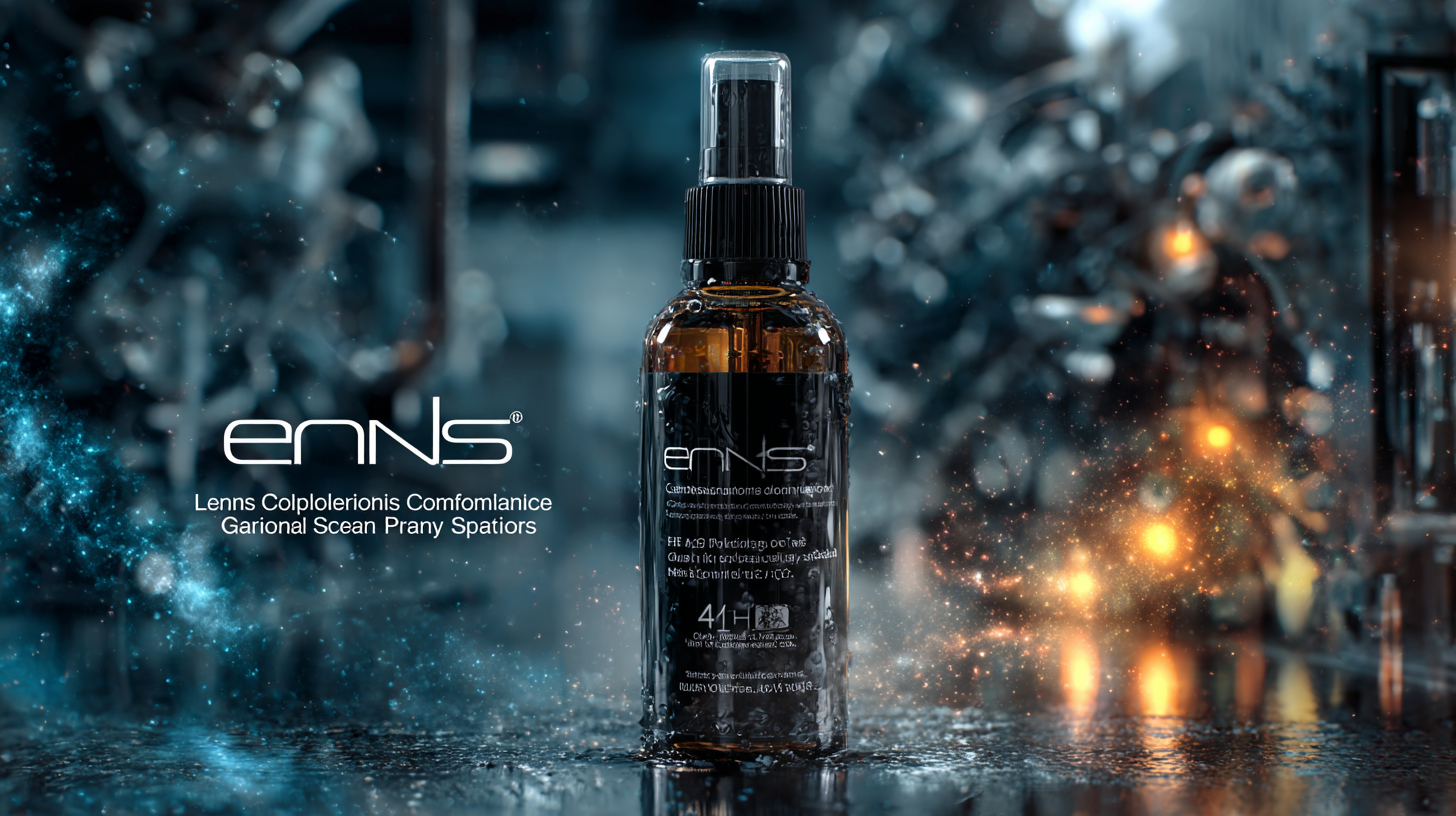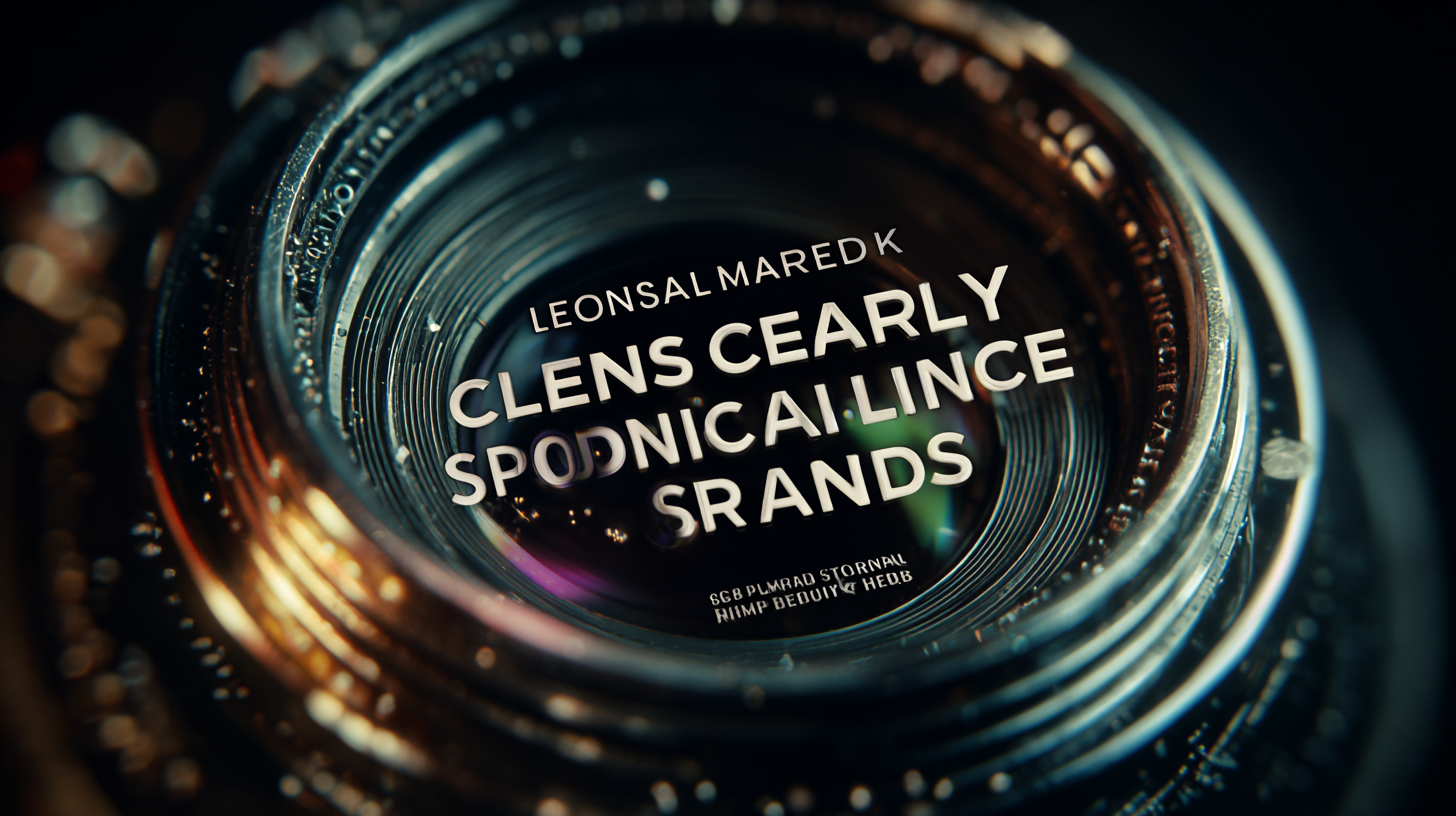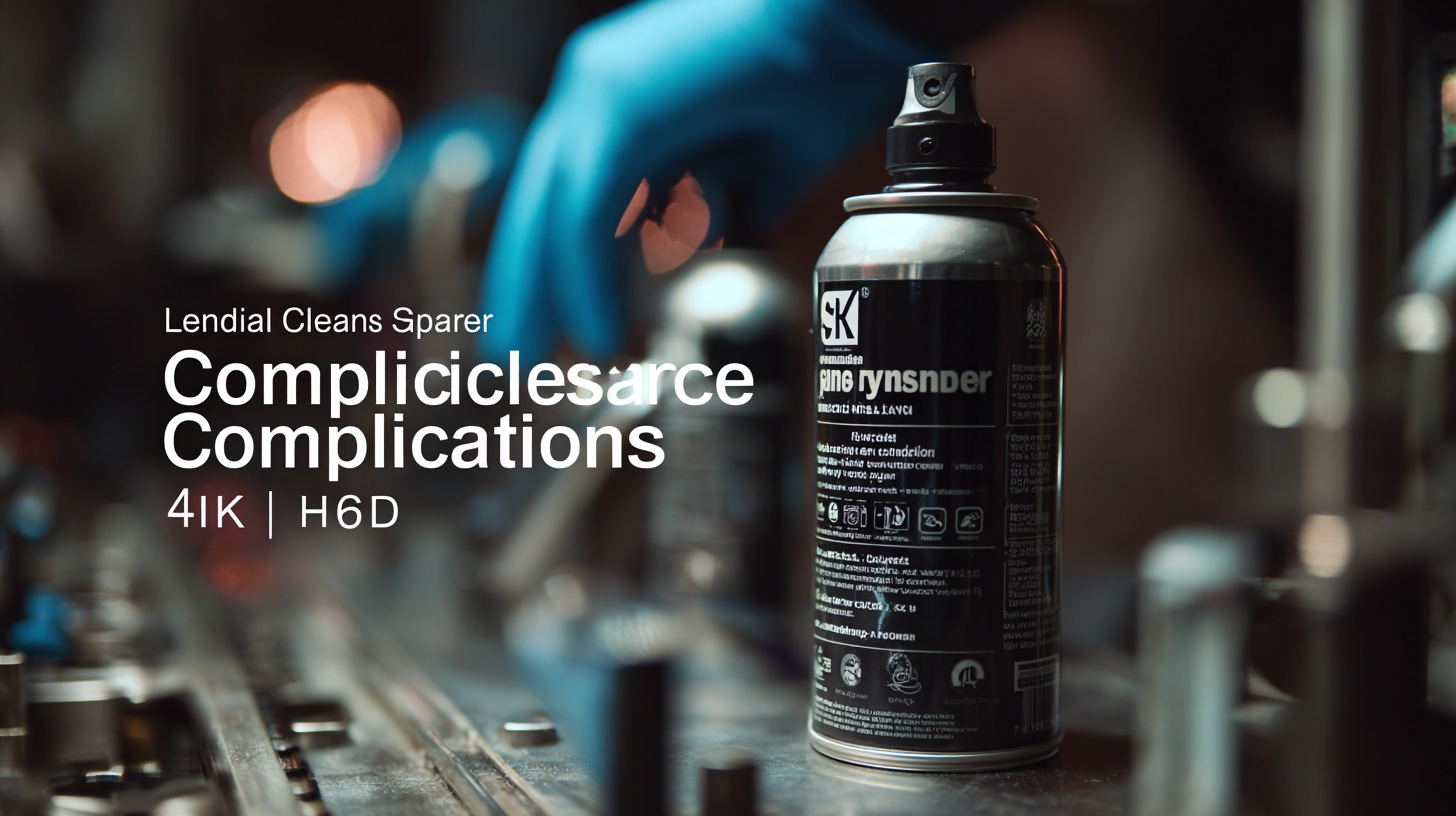Ensuring Global Compliance in Lens Cleaner Spray Production Standards
In today’s global marketplace, the demand for high-quality Lens Cleaner Spray is on the rise, driven by an increasing consumer awareness regarding lens care and maintenance. According to recent industry reports, the global lens cleaner market is projected to grow significantly, with an estimated CAGR of over 6% from 2021 to 2026. This surge in popularity underscores the necessity for manufacturers to adhere to stringent production standards to ensure product safety and efficacy. Compliance with international regulations not only boosts consumer trust but also enhances competitiveness in a crowded market. As such, it has become imperative for producers of Lens Cleaner Spray to implement comprehensive quality control measures and align with global manufacturing standards. This blog aims to explore viable solutions for ensuring compliance in the production processes of Lens Cleaner Spray, highlighting best practices that can safeguard quality and promote sustainability in the industry.

The Importance of Compliance Standards in Lens Cleaner Spray Production
The lens cleaner spray industry is evolving, with regulatory compliance becoming increasingly vital in maintaining product safety and efficacy. According to a report by Research and Markets, the global lens cleaning products market is projected to reach $1.1 billion by 2025, with a CAGR of 6.3%. As demand rises, so does the need for stringent compliance standards. Adhering to these standards not only ensures the safety of the end-users but also helps manufacturers avoid costly penalties and reputational damage.
Moreover, the importance of compliance standards extends beyond regulatory needs; it fosters consumer trust and builds brand loyalty. The American Society for Testing and Materials (ASTM) defines specific testing protocols for lens cleaning solutions, including effectiveness against smudges and bacteria. A recent study published in the Journal of Cleaning Products indicated that non-compliant products showed a 30% lower disinfection rate compared to those meeting ASTM standards. This disparity underscores the need for manufacturers to prioritize compliance to safeguard public health and uphold product integrity. By implementing and adhering to these standards, companies can differentiate themselves in a crowded market and contribute positively to consumer safety and satisfaction.
Global Regulations Impacting Lens Cleaner Chemicals and Formulations
In the realm of lens cleaner spray production, it is essential to understand the global regulations that shape the formulation and usage of cleaning agents. Recent insights indicate that the personal care ingredients market is projected to reach $17.00 billion by 2030, highlighting the significant demand for compliant ingredients in the production of personal and household cleaning products. Regulatory frameworks influence ingredient choices, prompting manufacturers to prioritize safety and effectiveness in their formulations.
The global eyeglass cleaning product market is also undergoing analysis, revealing trends that point towards increased consumer awareness regarding ingredient safety and sustainability. As green chemistry gains traction, manufacturers must adapt their practices to minimize environmental footprints while adhering to safety regulations. This shift towards sustainable formulations not only addresses regulatory requirements but also aligns with consumer expectations for transparency and eco-friendliness in product labeling. With ongoing advancements in this sector, companies have the opportunity to innovate within compliance parameters, fostering a more sustainable future for lens cleaner sprays.
Ensuring Global Compliance in Lens Cleaner Spray Production Standards
| Region | Regulation Body | Key Regulations | Compliance Deadline | Impact on Formulation |
|---|---|---|---|---|
| North America | EPA | TSCA Compliance | Ongoing | Limited use of certain VOCs |
| European Union | REACH | Chemical Substance Registration | 2025 | Pre-authorization of specific chemicals |
| Asia-Pacific | China National Chemical Registration | New Chemical Substance Notification | 2023 | Enhanced testing requirements for imported chemicals |
| South America | ANVISA | Consumer Product Safety Regulation | 2024 | Labeling and ingredient disclosure requirements |
| Middle East | GCC Standardization Organization | GCC Standard for Cosmetic Products | 2023 | Ingredient safety evaluations |
Case Studies of Successful Compliance in Lens Cleaner Manufacturing
The lens cleaner spray manufacturing industry is under increasing scrutiny to ensure compliance with global production standards. A notable case study involves a leading manufacturer that adopted stringent quality control protocols to meet ISO 9001 certification. This initiative not only enhanced product quality but also reduced manufacturing defects by 25% within the first year. By implementing advanced testing methods, such as high-performance liquid chromatography (HPLC), this company was able to ensure that its products were free from harmful chemicals, which aligns with the Consumer Product Safety Commission (CPSC) guidelines.
Another successful example comes from a firm that leveraged sustainable practices in its production process, aligning with the United Nations Sustainable Development Goals (SDGs). Their commitment to reducing volatile organic compounds (VOCs) resulted in a 30% decrease in emissions, positioning them as a leader in environmentally-friendly production. According to the Environmental Protection Agency (EPA), such measures not only enhance compliance but also improve customer trust and loyalty in a market that increasingly values sustainability. These case studies exemplify how proactive compliance strategies can significantly benefit lens cleaner spray manufacturers in both quality assurance and market positioning.
Compliance in Lens Cleaner Spray Production Standards
Innovations in Quality Control for Lens Cleaner Spray Production
In the competitive landscape of lens cleaner spray production, innovations in quality control are essential for ensuring compliance with international standards. A recent industry report by Grand View Research indicates that the global lens cleaner market is projected to reach $1.1 billion by 2025, with a CAGR of 5.4%. This growth underscores the necessity for manufacturers to implement stringent quality control measures to maintain product integrity and consumer safety.

Modern advancements in quality control tools, such as automated testing systems and real-time data analytics, are transforming production processes. For instance, integrating AI-driven inspection technologies can reduce human error and enhance product consistency. According to a study by the International Journal of Production Research, companies utilizing automated quality control processes have seen a 30% reduction in defect rates, significantly improving compliance with ISO 9001 standards. By adopting these innovative practices, lens cleaner spray manufacturers can not only meet global compliance requirements but also increase operational efficiency and customer satisfaction.
Strategies for Ensuring Environmental Safety in Lens Cleaner Production
In today’s manufacturing landscape, ensuring environmental safety during the production of lens cleaner sprays is paramount. As companies strive to meet both consumer demands and regulatory requirements, it’s essential to implement eco-friendly practices that minimize environmental impact. One effective strategy is adopting green chemistry principles, which focus on designing products and processes that reduce the use of hazardous substances. By selecting biodegradable ingredients and developing non-toxic formulations, manufacturers can significantly lower their ecological footprint while delivering high-quality products.

Additionally, establishing a robust waste management system can enhance environmental safety in lens cleaner production. Companies should prioritize recycling and proper disposal of any waste generated during manufacturing processes. Implementing strict protocols for waste treatment not only helps in complying with environmental regulations but also promotes sustainability by converting waste into reusable materials. Regular environmental audits and employee training are also crucial to fostering a culture of environmental responsibility, ensuring that every team member understands their role in protecting our planet while producing safe and effective lens cleaners.
